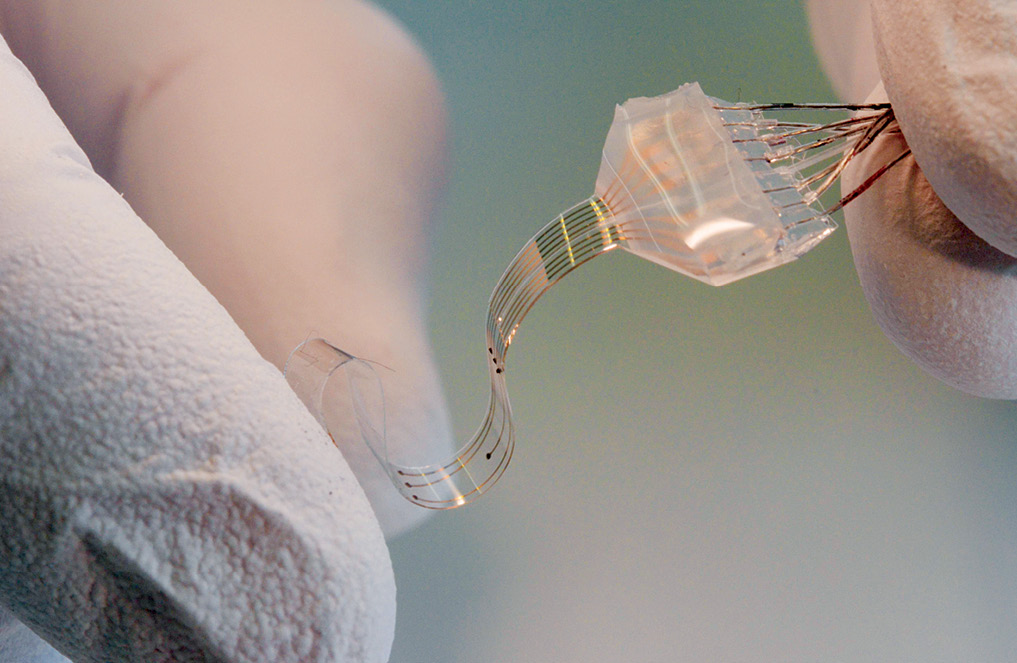More on the anvil
The future holds many more such devices, as was seen at Elsevier’s 4th International Conference on Bio-Sensing Technology. One of the interesting technologies demonstrated at the event was a home diagnosis card developed in Sweden by Linköping University and Acreo. The device, the size of a credit card, takes a drop of blood or saliva as input from the user and gives diagnostic information on his or her phone. This information can help monitor diabetes, heart and kidney diseases and even cancer. Screen printing all electronics on the card makes it very cost-effective, too. It currently costs €5 each, but as volume picks up, it can be manufactured at €0.50 per piece.

According to Elsevier’s press release on the event, “This means these have the potential to provide patients and doctors in developing countries with accessible, affordable medical tests. For example, the printed card could be made part of the packaging of antibiotics, helping determine which antibiotic would be best to treat a patient’s infection. Such printable devices could also be worn like plasters or contact lenses, transmitting information to mobile phones.”
Another recent development in this space is a type of e-skin developed by Suzhou Institute of Nano-Tech and Nano-Bionics, Chinese Academy of Sciences, China. Born of nanotechnology and flexible electronics, e-skin has the ability to detect changes in pressure, which can, in turn, be used to monitor blood pressure, heart rate and wrist pulse on real-time basis. The team has worked to make the sensor element very sensitive, while making the material very flexible. This they have done using carbon nanotubes and sheets of graphene only a few atoms thick.
Helping hand from Big Data
There are many more devices in the wearable cadre; however, the magic ingredient that will make these really useful is smart data analysis.
Dr Michael Docktor, a gastroenterologist at Boston Children’s Hospital, also clinical director of innovation and director of clinical mobile solutions, wrote in January in an article about CES 2015, “As these wearables become more of a clinical tool than merely a personal wellness device, data analytics and the ability to serve up meaningful, reliable and actionable data to one’s care team will be critical.”
Robots to the rescue
Carol Reiley, an experienced computer scientist and roboticist, spoke about future applications of robots in medical technology, at Bay Area Maker Faire 2015. The picture she painted was fantastic—of miniature robots that enter the body through natural openings like the mouth and perform surgeries inside. Some of these are devices like Pillcam that allow minimally-invasive imaging of a person’s colon, sensor-augmented surgical tools like the Intuitive Surgical Firefly system that injects a dye for fluorescent imaging to help identify tumours during surgery, augmented reality solutions that allow surgeons to look beneath the patient’s skin, robots that assist in therapeutic exercises and so on.
It is interesting to note that famous robotic contests like John Hopkins Robo Challenge have some quests that encourage children to solve problems similar to those experienced in the medical field. A challenge to build a robot that can spot a grape in Jello, for example, can be compared with finding a tumour in soft tissue.
Implants aplenty
When somebody says implant, you might be immediately reminded of devices like the pacemaker, which have been around for decades now. Now, take a look at these implants and you will realise the current generation is incomparable to medical electronics a decade back.
Dissolvable devices for drug delivery. Last year, researchers at Tufts University’s School of Engineering developed resorbable, wirelessly-controlled electronic implants made of silk and magnesium that could deliver heat treatment on a patient’s body tissues to treat bacterial infections and then safely dissolve. The device consisted of a serpentine resistor and a power-receiving coil made of magnesium deposited onto a silk-protein layer. The silk pocket protected the electronics and controlled the device’s dissolution time.











This is quiet a good inovation especially for the rural areas like telemedicine